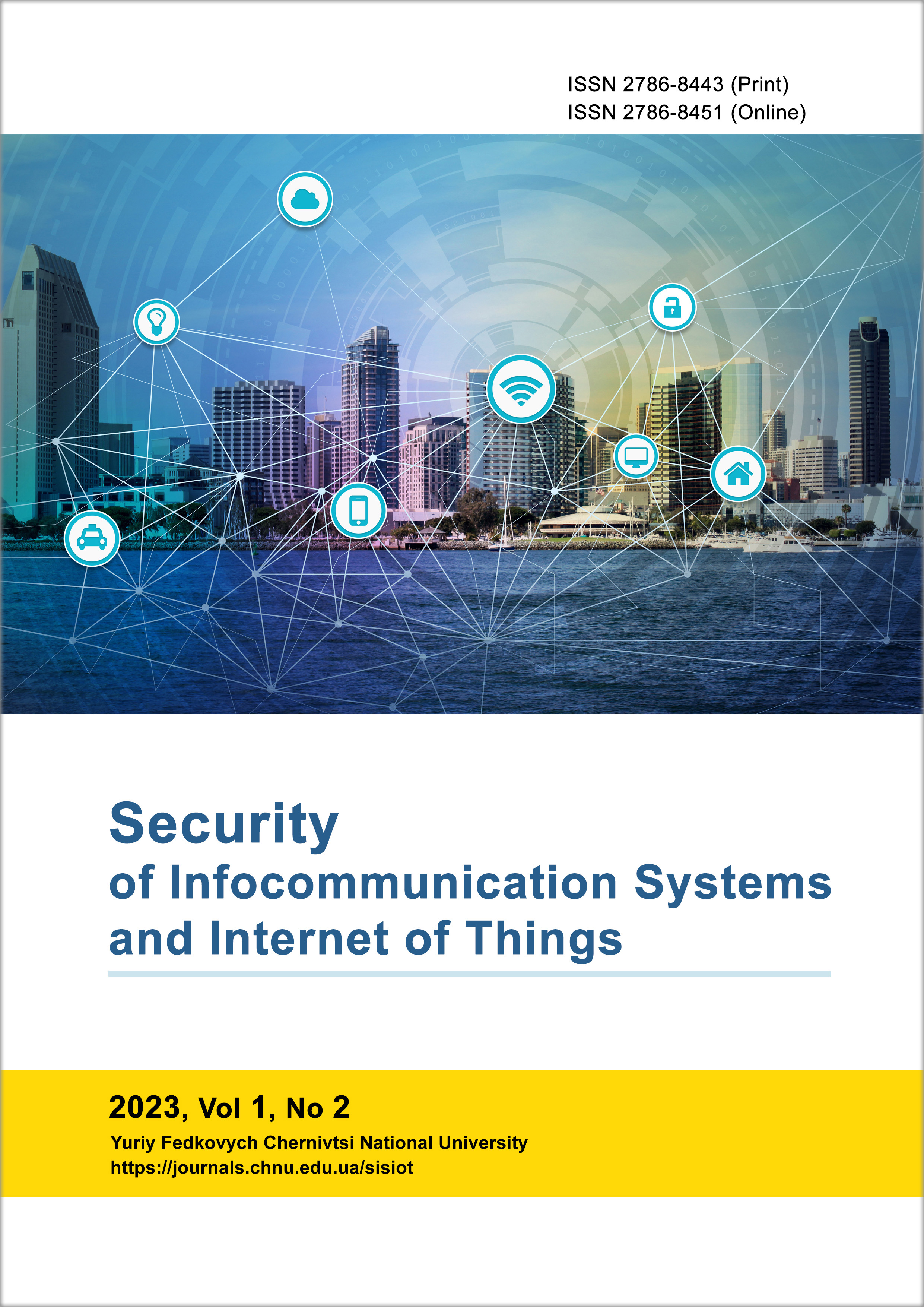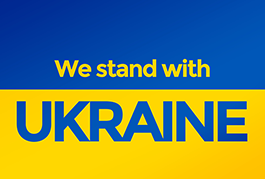Information Technology and Software for Simulation, Synthesis and Research of Data Crypto Protection Methods
DOI:
https://doi.org/10.31861/sisiot2023.2.02011Keywords:
information and communication system, stream encryption, block code, RSA codeAbstract
The described information technology for improving data protection (ITIDP) in information communication systems (ICS) is built on the basis of a system approach for the implementation of hardware and software solutions for encryption/decryption of data flows in a given continuum of hardware-software-space-time limitations. The formulation of the task for the implementation of ITIDP is substantiated, and a variant of its architecture is proposed. Examples of the development of possible hardware and software modules and resources for the creation of both ITIDP and ICS with increased protection of real-time data flows are given. The issues of choosing methods and means of data encryption in real technical systems and criteria for assessing the necessity and adequacy of encrypted protection of information flows depending on the usefulness and confidentiality of transmitted data are discussed. As a practical approbation of the application of the proposed technology for solving applied problems, examples of the synthesis and research of a special processor for a block cipher with sequential data processing and dynamic key correction, as well as the results of research and optimization of the RSA encryption model for its use in critical application mobile systems with limited hardware and software resources. It is shown that for systems with limited hardware resources in the RSA model of the cipher, it is more correct to use not the Euler function, but the Carmichael function. This approach, together with the use of a modified method of successive approximations according to the rules of modular algebra for calculating large powers of a large base with the subsequent determination of the remainder by a given modulus of a very large number, makes it possible to remove restrictions on the bit rate of data in low-power computers and speed up data decryption processes. The use of modular architecture in the proposed information technology ensures its scalability and quick reconfiguration for the study of various methods of cryptographic data protection.
Downloads
References
C. Greer, M. Burns, D. Wollman, E. Griffor. (2019). Cyber-Physical Systems and Internet of Things, Special Publication (NIST SP), National Institute of Standards and Technology, Gaithersburg, MD, [Online]. https://doi.org/10.6028/NIST.SP.1900-202
Н. I. Vorobets, O. I. Vorobets, V. E. Horditsa, IoT Technologies for Cyber Physical Systems, PART IV. Chapter 12. CPS and IoT as a Basis of Industry 4.0 / In : Internet of Things for Industry and Human Application. In Volumes 1-3. Volume 1. Fundamentals and Technologies / V. S Kharchenko (ed.) – Ministry of Education and Science of Ukraine, National Aerospace University “KhAI”, 2019, 605p., pp. 442-495.
A. Nitaj. The Mathematical Cryptography of the RSA Cryptosystem [Online]. Available: https://nitaj.users.lmno.cnrs.fr/RSAnitaj1.pdf
A. Dutta. “Comparison of Modern Cryptography Methods,” Preprints, 2022, 2022070389. doi.org/10.20944/preprints202207.0389.v1
N. Graf zu Castell-Castell, Crashing (shattering) the RSA Code [Online]. Available: https://www.linkedin.com/pulse/crashing-shattering-rsa-code-nikolaus-castell-castell?trk=pulse-article_more-articles_related-content-card
S. Toliupa, S. Shtanenko, T. Poberezhets, V. Lozunov, “Methodology for designing robotic systems based on CADIntel Quartus Prime,” Systems and technologies of communication, informatization and cyber security, vol. 2, no. 2, pp. 54-62, 2022.
H. Vorobets, O. Vorobets, V. Horditsa, V. Tarasenko, O. Vorobets, “Self-reconfigurable Cryptographical Coprocessor for Data Streaming Encryption in Tasks of Telemetry and the Internet of Things,” Proceedings of the 9th IEEE International Conference on Intelligent Data Acquisition and Advanced Computing Systems: Technology and Applications (IDAACS’2017), 21-23 September, 2017, Bucharest, Romania, pp. 1117-1120, 2017, doi: 10.1109/IDAACS.2017.8095259
H. Vorobets, O. Vorobets, V. Horditsa, V. Tarasenko, O. Vorobets, “Features of Synthesis and Statistical Properties of a Modified Stream Encoder with Dynamic Key Correction,” Conference Proceedings of 2018 IEEE 9th International Conference on Dependable Systems, Services and Technologies (DESSERT’2018), 24-27 May, 2018, Kyiv, Ukraine, pp. 160-165, doi: 10.1109/DESSERT.2018.8409118
A. V. Palagin, V. M. Opanasenko “Design and Application of the PLD-Based Reconfigurable Devices,” Design of Digital Systems and Devices. Series: Lecture Note in Electrical Engineering, vol. 79, pp. 59-91, 2011.
G. I. Vorobets, O. I. Vorobets, V. E. Gorditsa, “Application of the system approach for the synthesis of models of basic elements of reconfigurable structures at the information transmission systems,” Electrical engineering and computer systems, vol. 28, no. 104, pp. 257-267, 2018.
A. Rukhin, (2010) A Statistical Test Suite for Random and Pseudorandom Number Generators for Cryptographic Applications. National Institute of Standards and Technology [Online]. Available: https://nvlpubs.nist.gov/nistpubs/Legacy/SP/nistspecial publication800-22r1a.pdf
V. I. Masol, S. V. Popereshnyak, “Checking the Randomness of Bits Disposition in Local Segments of the (0, 1)-Sequence,” Cybernetics and Systems Analysis, vol. 56, no. 3, pp. 1-8, 2020, doi: 10.1007/s10559-020-00267-0
Sh. Wang, “A Study of the Use of Euler Totient Function in RSA Cryptosystem and the Future of RSA Cryptosystem,” Journal of Physics: Conference Series, vol. 2386, art. no. 012030, doi: 10.1088/1742-6596/2386/1/012030
Cryptography. Why do we need Euler's totient function j(N) in RSA? [Online]. Available: https://crypto.stackexchange.com/questions/33676/why-do-we-need-eulers-totient-function-varphin-in-rsa
G. I. Vorobets, R. D. Gurzhuy, M. A. Kuz, “A computerized system with a reconfigurable architecture for monitoring environmental parameters,” Eastern European journal of advanced technologies, vol. 2, no. 6, pp. 55-59, 2015.
Published
Issue
Section
License
Copyright (c) 2023 Security of Infocommunication Systems and Internet of Things

This work is licensed under a Creative Commons Attribution 4.0 International License.









